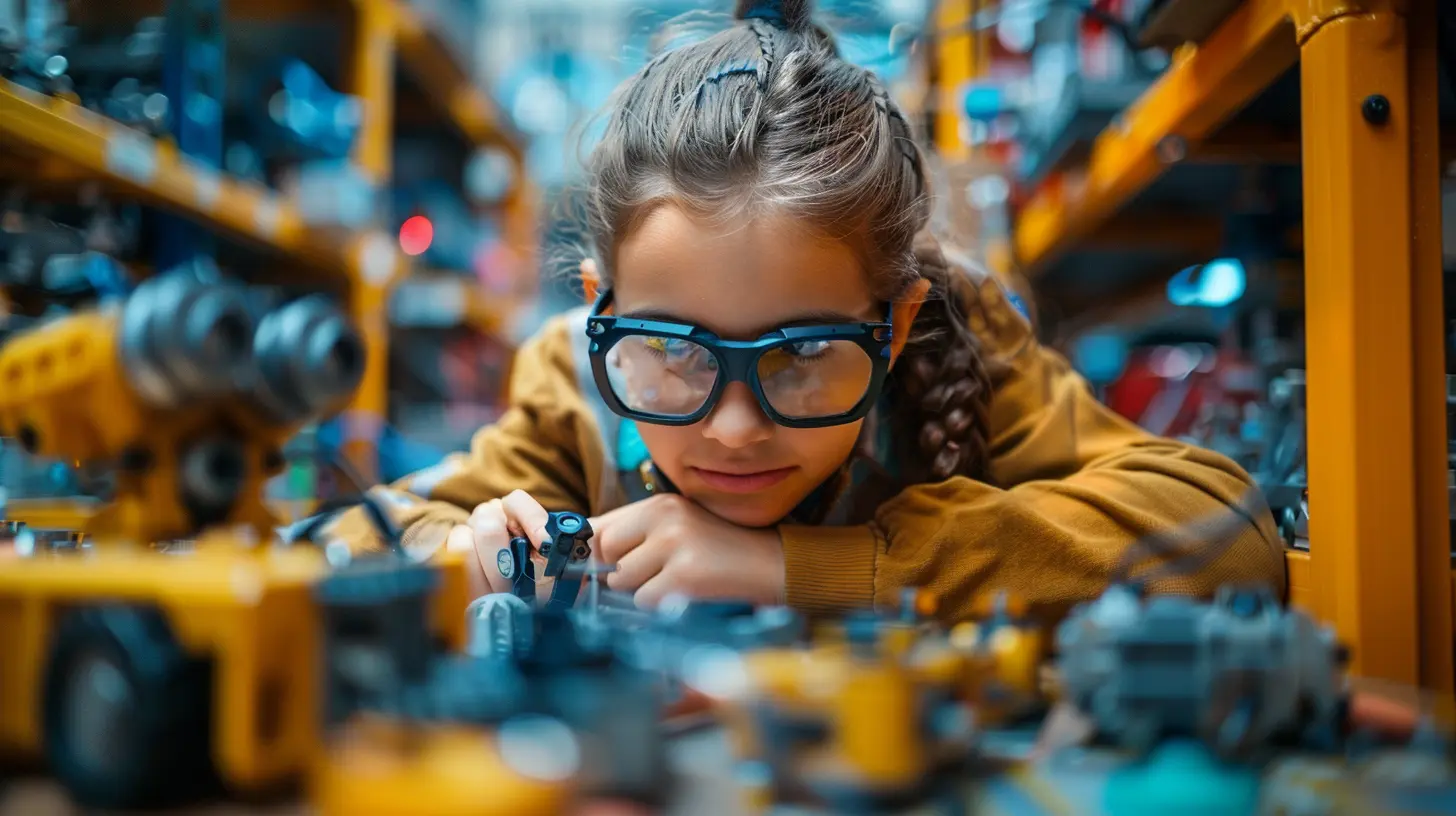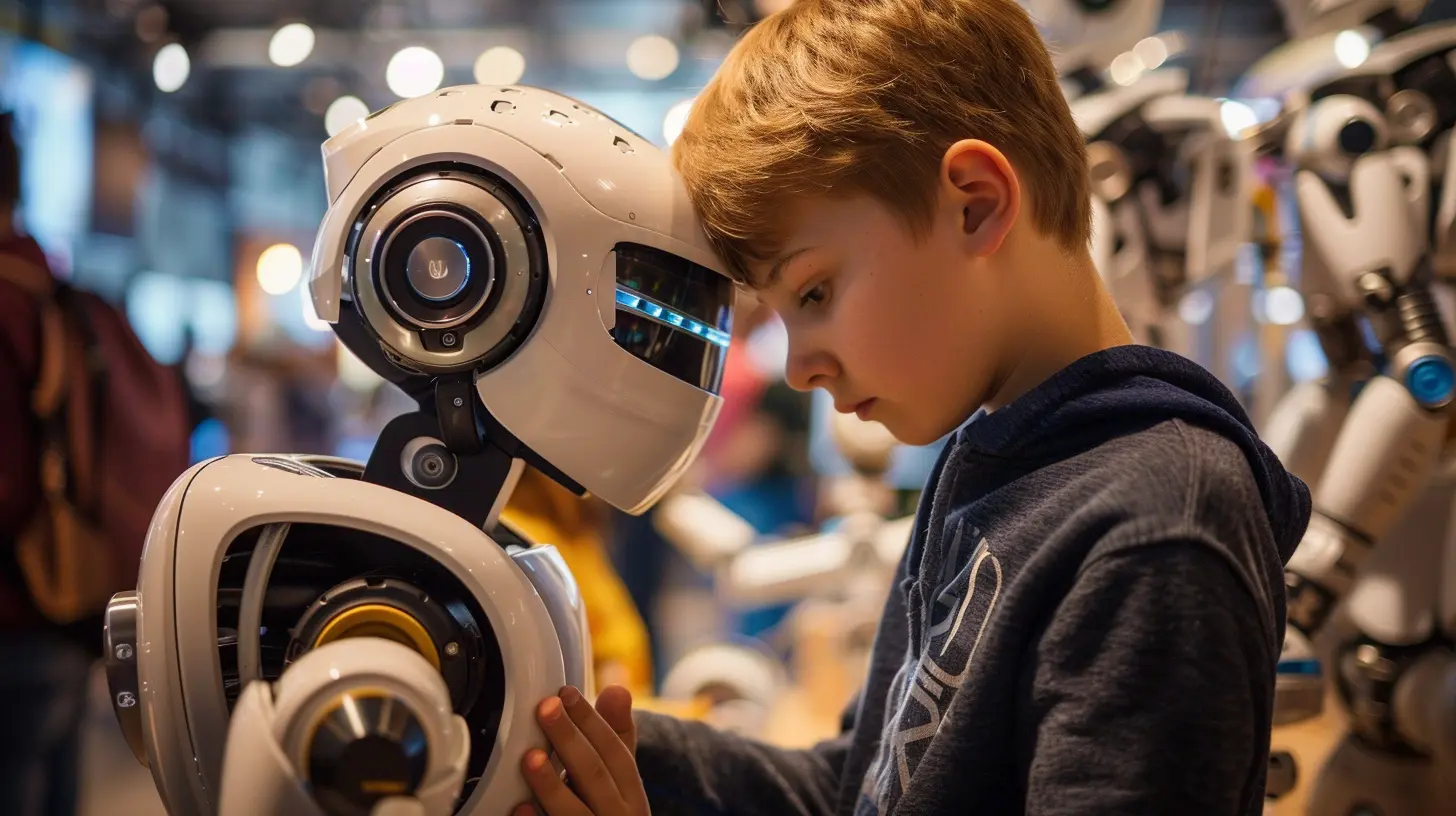The Impact of Robotics in STEM Education
6 July 2025
STEM education (Science, Technology, Engineering, and Mathematics) has transformed significantly over the years, and one of the game-changers in this evolution is robotics. Robotics is no longer just a futuristic fantasy; it’s shaping how students learn, think, and prepare for the future.
Kids today aren’t just reading about circuits and algorithms in textbooks—they’re building robots, coding programs, and solving real-world problems in innovative ways. Sounds exciting, right? But how exactly does robotics impact STEM education? Let’s dive into it and find out. 
Why Is Robotics Important in STEM Education?
Robotics serves as the perfect bridge between theoretical knowledge and practical application. It combines aspects of science, engineering, and programming in a tangible way, allowing students to see their ideas come to life. But that’s just the beginning!Here are a few key reasons why robotics has become a core part of STEM education:
1. Encourages Hands-On Learning
Let’s be real—learning complex STEM concepts from a book can be boring. But when students get to build a robot with their own hands? Now, that’s engaging! Robotics gives kids the opportunity to experiment, tinker, and problem-solve in a fun and interactive way.For example, a student trying to make a robot move forward learns about physics, gears, and coding—all without even realizing they’re absorbing high-level STEM concepts. Hands-on experience cements learning in a way that traditional methods just can’t match.
2. Improves Problem-Solving and Critical Thinking Skills
Robotics is all about trial and error. When students design and program a robot, they face challenges—maybe their robot doesn’t turn properly, or the sensor isn’t detecting objects. Instead of giving up, they’re encouraged to analyze, troubleshoot, and refine their approach.This fosters critical thinking and problem-solving skills, which are incredibly valuable—not just in STEM careers but in life as well!
3. Sparks Creativity and Innovation
Who said STEM is all about numbers and equations? Robotics blends creativity with technology, allowing students to think outside the box.When kids design their own robots, they’re essentially creating something new from scratch. Whether it’s a robot that can clean a room or one that solves a Rubik’s cube, they’re applying imagination and technical knowledge to build something innovative.
4. Prepares Students for the Future Job Market
Think about the job market today—automation, AI, and robotics are everywhere, right? Companies are actively looking for professionals who understand robotics and programming.By introducing students to robotics early on, we’re giving them a head start in future careers. Whether they become software engineers, data scientists, or even doctors using robotic-assisted surgery, these skills will be indispensable in the future workforce.
5. Makes Learning STEM Subjects More Accessible
STEM subjects have a reputation for being difficult and intimidating. But robotics simplifies these subjects by making them interactive and engaging.For example, kids who struggle with math concepts might find it easier to grasp when they see how calculations influence their robot’s movements. It’s like turning a dull math equation into a fun, interactive game! 
How Robotics is Being Integrated into STEM Curriculum
The adoption of robotics in schools is growing rapidly. But how exactly is it being integrated into classrooms?1. Robotics Labs in Schools
Many schools have started setting up robotics labs where students can get hands-on experience with programming and mechanics. These labs serve as a playground for young minds to experiment, build, and innovate.2. Robotics Competitions
Ever heard of FIRST Robotics, VEX Robotics, or LEGO Mindstorms competitions? These are national (and even global) competitions where students design and program robots to complete specific challenges.Such events boost teamwork, critical thinking, and leadership skills, all while making learning extremely fun and rewarding.
3. Coding and Robotics Courses
Many schools are now offering robotics and coding classes as part of their curriculum. From block-based coding for beginners (like Scratch) to advanced programming languages like Python and C++, students learn how to program robots to perform various tasks.4. Integration with STEM Subjects
Robotics isn’t just limited to one class—it’s being blended into multiple subjects.- Math: Students use geometry and algebra to calculate angles and distances for robot movements.
- Science: Robotics helps demonstrate physics concepts like force, motion, and energy.
- Engineering: Students learn about gears, circuits, and mechanical design.
- Technology: They use coding and automation to bring their ideas to life.
This multidisciplinary approach ensures that students understand the real-world applications of what they’re learning. 
Challenges in Implementing Robotics in STEM Education
Of course, integrating robotics into education does come with its challenges.1. Cost of Robotics Kits and Infrastructure
Robotics kits, computers, and software can be expensive, making it difficult for underfunded schools to adopt these programs. Schools need proper funding and grants to make robotics accessible to all students.2. Need for Trained Educators
Not all teachers are familiar with robotics or programming. Schools need to invest in teacher training programs to ensure that educators can effectively guide students in robotics-based learning.3. Keeping Up with Rapid Technological Advances
Technology evolves fast. Schools need to keep updating their robotics curriculum to stay relevant and ensure students are learning the latest skills.Despite these challenges, the benefits far outweigh the drawbacks, and with the right investment, robotics can make a huge difference in STEM education. 
Final Thoughts: Is Robotics the Future of STEM Education?
Absolutely! Robotics isn’t just a trend—it’s a revolution in how we teach STEM. It transforms learning into an interactive, engaging, and hands-on experience, helping students develop skills that will serve them for life.From critical thinking and creativity to programming and engineering, robotics equips students with the tools they need to thrive in the future job market.
So, should every school embrace robotics? Without a doubt. The sooner we integrate robotics into classrooms, the better prepared students will be for a world driven by technology and innovation.
What do you think—should robotics be a core part of every school’s curriculum? Let us know in the comments!
all images in this post were generated using AI tools
Category:
Innovation In EducationAuthor:

Olivia Lewis
Discussion
rate this article
1 comments
Tabitha McClellan
Great insights! Robotics truly enhances engagement in STEM education.
July 22, 2025 at 4:55 AM

Olivia Lewis
Thank you! I'm glad you found the insights valuable. Robotics indeed plays a pivotal role in enhancing engagement in STEM education.


